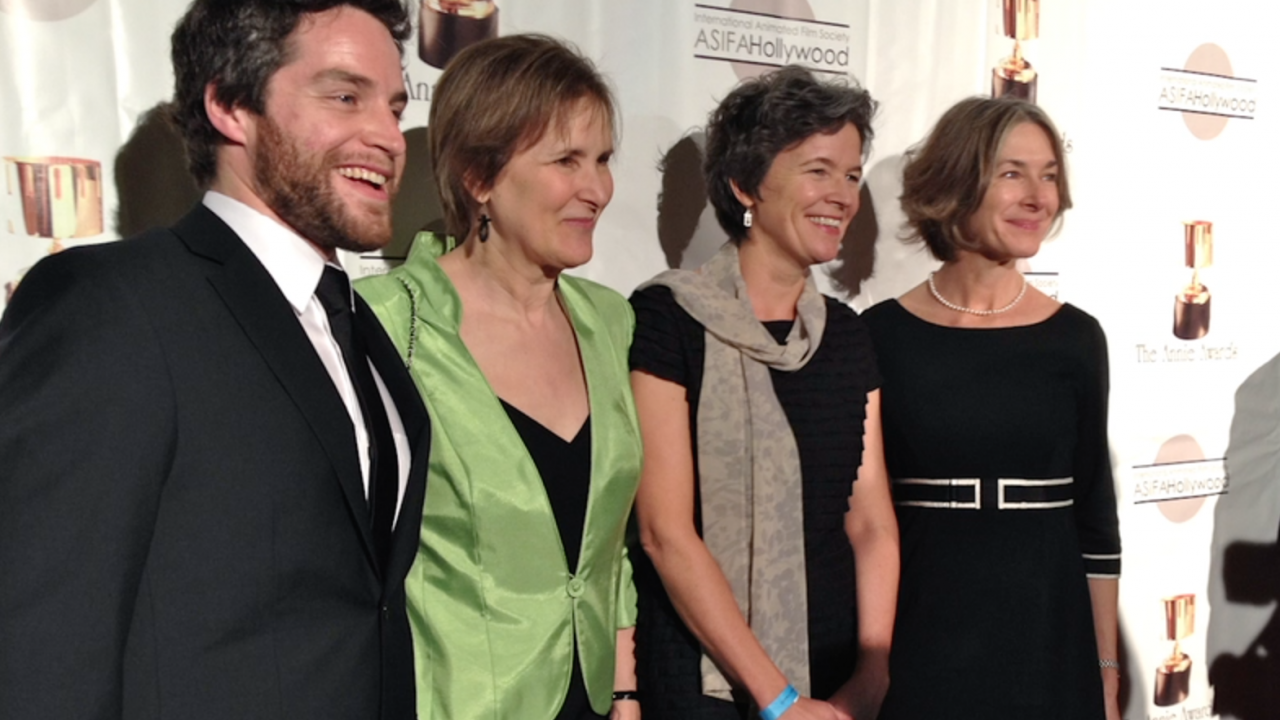
Marcy Page, Winner of This Year’s Winsor McCay Award
Marcy Page, Winner of This Year’s Winsor McCay Award
Every year at the Annie Awards in Los Angeles, the Hollywood chapter of the International Animated Film Association (ASIFA-Hollywood) presents the Winsor McCay Award in recognition of an individual’s career contributions to the art of animation. Past recipients of this prestigious honour include Walt Disney (posthumously, in 1975), director Tim Burton (2009) and Simpsons creator Matt Groening (2010). The 2024 winner is filmmaker and producer Marcy Page, who spent many years at the National Film Board.
Born and raised in California, Marcy immigrated to Canada, joining the NFB in 1990, where she initially worked as a director and associate producer before becoming a producer with the English Animation Studio. In that role, she always made a point of seeking out eclectic and unconventional projects that stretched the boundaries of animation.
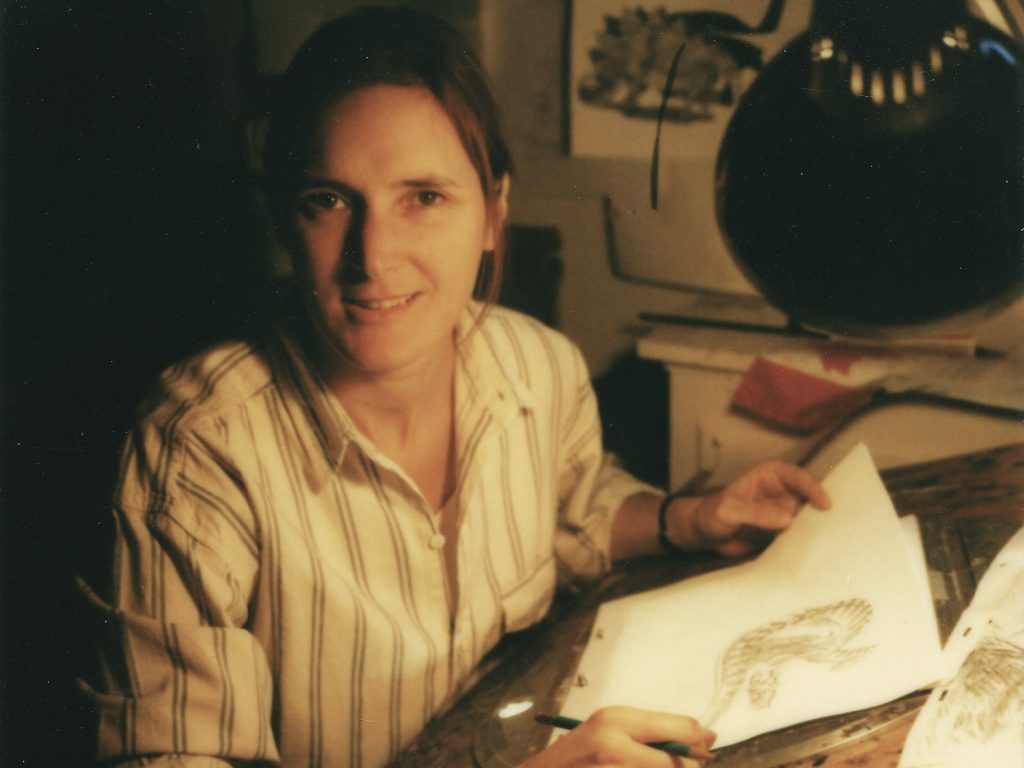
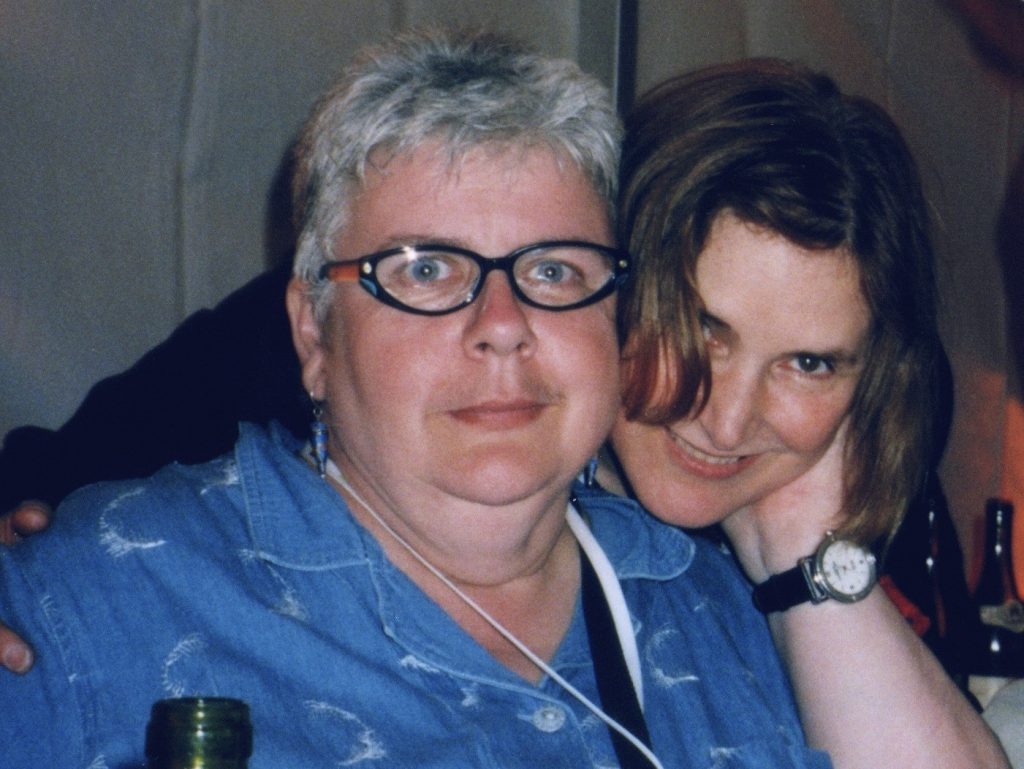
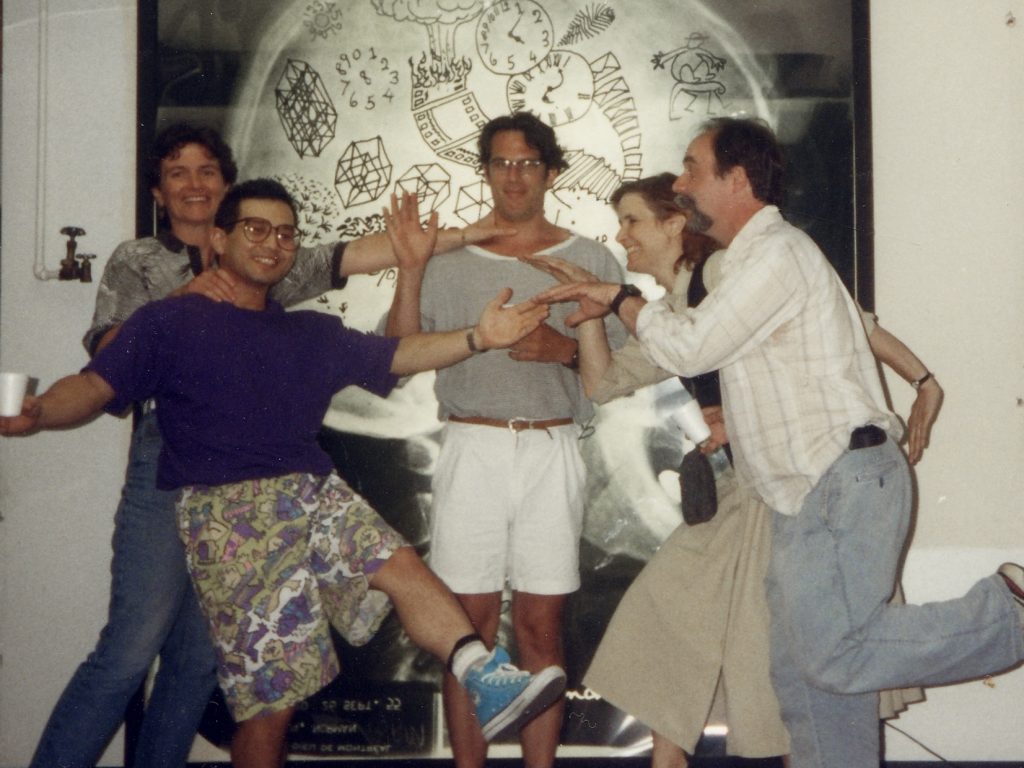
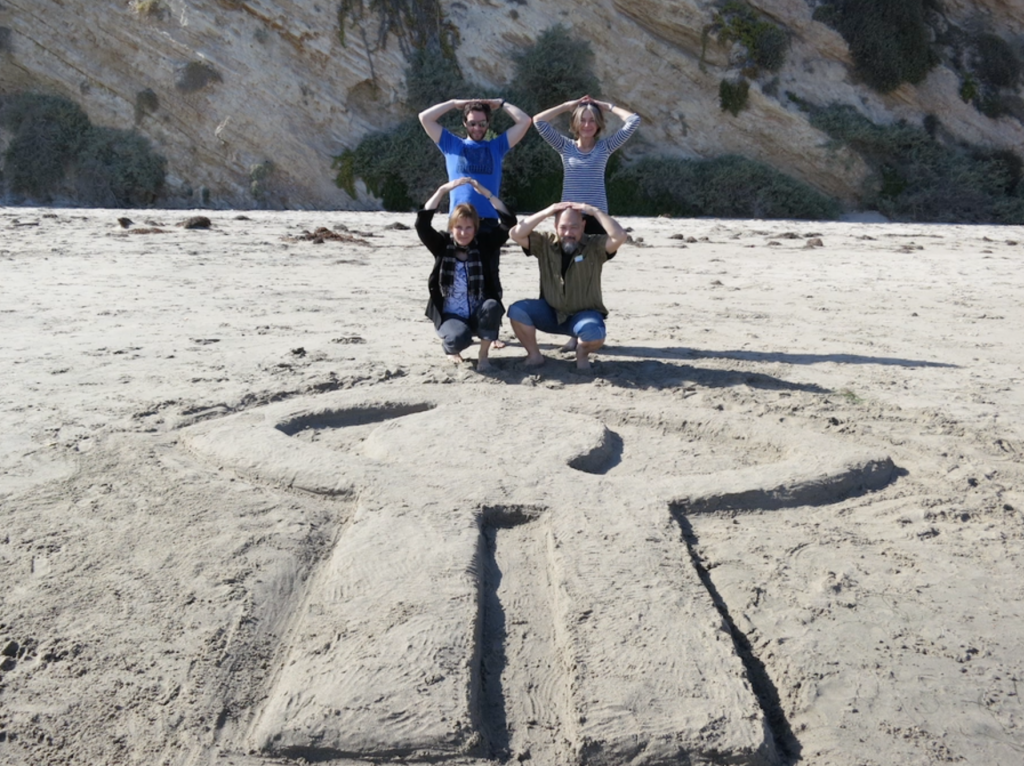
During a fruitful career spanning 24 years, she produced dozens of films by both emerging and experienced directors that, over time, earned more than 350 international awards for the NFB. That impressive track record includes six nominees for the Best Animated Short Film Oscar. They are Torill Kove’s My Grandmother Ironed the King’s Shirts (1999) and Me and My Moulton (2014), Chris Lavis and Maciek Szczerbowski’s Madame Tutli-Putli (2007) and Amanda Forbis and Wendy Tilby’s Wild Life (2011), as well as Chris Landreth’s Ryan (2004) and Kove’s The Danish Poet (2006), both of which went on to win the Academy Award.
The Danish Poet, Torill Kove, provided by the National Film Board of Canada
A few days before the Annie Awards ceremony, Marcy was kind enough to sit down with us to answer a few questions.
Could you provide us with a few words about the role of a producer in animation?
I can only speak to being an animation producer at the very unique National Film Board of Canada. At its best, it is about seeking out projects, auteur directors and artists who expand the idea of what animation can be—that push the possibilities of the medium and touch our humanity. It is about helping these creators clarify and realize their own vision to the very best of their ability. This might be by being an honest first audience to their evolving project, helping to put an inventive team in place that will complement their strengths and weaknesses, doing a lot of “creative listening,” or being an advocate for the project within the institution. Of course, there’s a lot of other less glamorous work that one tends to repress. I come to producing from having been a teacher and an independent animator, so I’ve always been guided by what I myself might have appreciated.
How did you come to work at the NFB?
I met many animation directors and production people from the NFB while teaching animation classes at San Francisco State University with my colleague Marty McNamara. The SF Canadian Consulate correctly saw NFB animation and its makers as cultural ambassadors for Canada and strongly supported cultural exchange. Normand Roger, who freelanced as a composer and sound designer for many renowned NFB animated films, visited as a guest speaker. He also ultimately agreed to collaborate on an animated film I had started. Years later, we mixed the finished film in Montreal. Let’s just say that it was an enchanted time for me. I ended up applying to immigrate to Canada in 1988 to be with Normand, and we have been together ever since.
As soon as my landed immigrant status came through in 1990, David Verrall, then an animation producer at the NFB, hired me to temporarily work on a series of eclectic animation sequences for a documentary project. He was also key to eventually hiring me as a producer in the department when Eunice Macaulay retired. This transition involved a number of directors encouraging me to apply for the position, including John Weldon, getting on his knees and begging, proposing that we could make beautiful films together. I did naively apply and got the job. And all the visionary and talented people I worked with on productions ever since made it a decision I do not regret.
What does it mean to you to receive the prestigious Winsor McCay Award presented by the Annie Awards in Los Angeles in recognition of lifetime or career contributions?
It was a complete surprise. I suppose I have been surrounded by Canadian humility far too long, as I think my first reaction when I was phoned with the news was to blurt out, “Why me?” (also the title of one of my favourite NFB films). I finally believe I am just a figurehead for the wider recognition of NFB animation.
Why Me, Janet Perlman & Derek Lamb, provided by the National Film Board of Canada
The organization ASIFA is an amazing international collection of chapters all over the world, uniting diverse animators through this transcendent shared art form. ASIFA Hollywood, which sponsors the Annie Awards, is perhaps the largest chapter, representing independent animators and the very lively California animation industry. I think this recognition from them is mainly due to the fondness that animators everywhere feel for the NFB and its example as a working government cultural institution, which is like a unicorn in the world today and certainly in the United States. The NFB has done powerful work to foster experimentation in animation in the auteur tradition of its founder, Norman McLaren, and has stacked up a proud collection of audacious, funny, challenging and touching work. Additionally, the NFB has set an example for inclusion, gender equity and diversity as an organization. In my experience, it is often easier for outsiders to recognize what many Canadians seem to take for granted. To be a government institution that supports such creative work sometimes feels like an impossible match (almost an oxymoron) but it has succeeded, and it has reflected Canadian values and multiculturalism in an unparalleled way. The NFB has had a positive, central role in the evolution and ecology of the film industry in Canada and its inspirational ripples have reverberated around the world.
Can you tell us about one or two significant moments related to your role as a producer or your career?
There are so many fleeting impressions that come to mind when I think about this question (so not one or two)… like a stream of consciousness. Watching Torill Kove hoist an Oscar for The Danish Poet (the key to admission) over her head as she led her “entourage” of Canadians and Norwegians to crash the Vanity Fair after-party… Chris Landreth walking into my office to pitch his animated “psychorealism” documentary Ryan, and then much later, my being absolutely stunned by the haunting animation of the character of Ryan Larkin touching a drawing from Walking… sitting delighted at a Steenbeck with Janet Perlman and composer Judith Gruber-Stitzer watching a rough edit of Bully Dance timed to a percussion-only guide track… my beginner’s luck elation at cementing a co-production at a single festival opening party in Norway with Studio Magica and the Norwegian Film Institute for My Grandmother Ironed the King’s Shirts (stupidly thinking it might be that easy again)… Torill Kove and I being mentored by David Verrall on how to edit narration to action for the best comic effect…
My Grandmother Ironed the King’s Shirts, Torill Kove, provided by the National Film Board of Canada
…peeking in on Lynn Smith to see the evolution of her astonishing paint-on-glass animation for Soup of the Day and being caught by one of her funny stories… planning, gossiping and forever laughing with the ineffable Hélène Tanguay… witnessing the puppet setup of Madame Tutli-Putli with all her earthly possessions lined up on a train platform as Chris Lavis tinkered with lights and Maciek Szczerbowski added yet more tiny artifacts to the magical assembly…
Madame Tutli-Putli , Chris Lavis & Maciek Szczerbowski, provided by the National Film Board of Canada
Ines Hardtke, Marie Renaud and I puzzling over how to bring Paul Driessen into the computer age with The End of the World in Four Seasons and how to assemble eight stories being told on the screen simultaneously… Gayle Thomas showing me her favourite quilt patterns to abstractly animate her film Quilt… script editing Seth’s Dominion with Luc Chamberland… hearing Luc’s distinctive laugh at everyone’s preview screenings… alternating between tears and laughter as I listened to Sheldon Cohen’s real-life episode that led to My Heart Attack… picking up discarded ink drawings, spontaneous and delightful, that Chris Hinton had trashed while animating Flux… watching with Wendy Tilby and Amanda Forbis the lush and beautiful paint movement on the big screen of the first release print of Wild Life, their faux documentary “western”…
Wild Life, Amanda Forbis & Wendy Tilby, provided by the National Film Board of Canada
…marvelling at Craig Welch’s exquisitely drawn, Rube Goldbergesque opening sequence for How Wings Are Attached to the Backs of Angels… premiering at the Art Gallery of Ontario the stereoscopic installation of June, Munro Ferguson’s abstract homage to Joyce June Wieland, created on SANDDE (Roman and Paul Kroitor’s novel system)… doing my own first stereoscopic drawing in space on SANDDE… coffee and script notes with fellow producer Melissa Malkin for Luc Otter and Claude Grosch’s Rose & Violet … finding Norman McLaren’s old slippers in a garbage bin after they cleared out a defunct office and literally “walking in his shoes” … and on and on.
What are you currently working on? Do you have any ongoing projects?
I have been working on an independent animated short called Virgin Fandango for a small eternity. The film is inspired by Portugal, where Normand and I spend part of the year in a big house that we share with celebrated animation filmmakers Abi Feijo and Regina Pessoa. Casa de Vilar is becoming somewhat of an animation centre, as Abi has a small animation museum and conducts wonderful workshops, and he and Regina have their studio there for personal film projects, as do Normand and I. They have worked with NFB French animation on various projects, revealing some of those NFB ripples around the world that are in turn multiplying inspiration exponentially. They are partnering on Virgin Fandango with their company, and Abi is a producer partner.
The film is being created using azulejos, Portuguese tiles that have a white base and cobalt blue designs. I create the initial figurative animation on paper and then project these images onto the white tile base that are then painted with cobalt pigment, image by image, by myself and other brave artists. This includes Belinda Oldford, who directed the NFB animation Come Again in Spring using her watercolour style, and who has been very supportive of the project. There is a kiln setup and we fire the tiles that are ultimately then re-photographed as stop-motion objects. There are now thousands and thousands of tiles. The tile painting is almost all done and the film is half shot, but there’s still much more to do. Yes, animation can be crazy and crazy making. I suspect that it’s more a “calling” than a profession.
Filmmakers’ tributes
“I think we should all thank our lucky stars that we have Marcy. Not only because she is such an accomplished and gifted producer, but because she is an exceptionally lovely human being. I am sure there are lots of people around the world who say they cannot think of anyone more deserving of this award than Marcy Page; I am very happy to join that chorus of voices singing Marcy’s praises. She is and always will be a beacon in the international community of animation and a bright star in many, many lives.” – Torill Kove, director
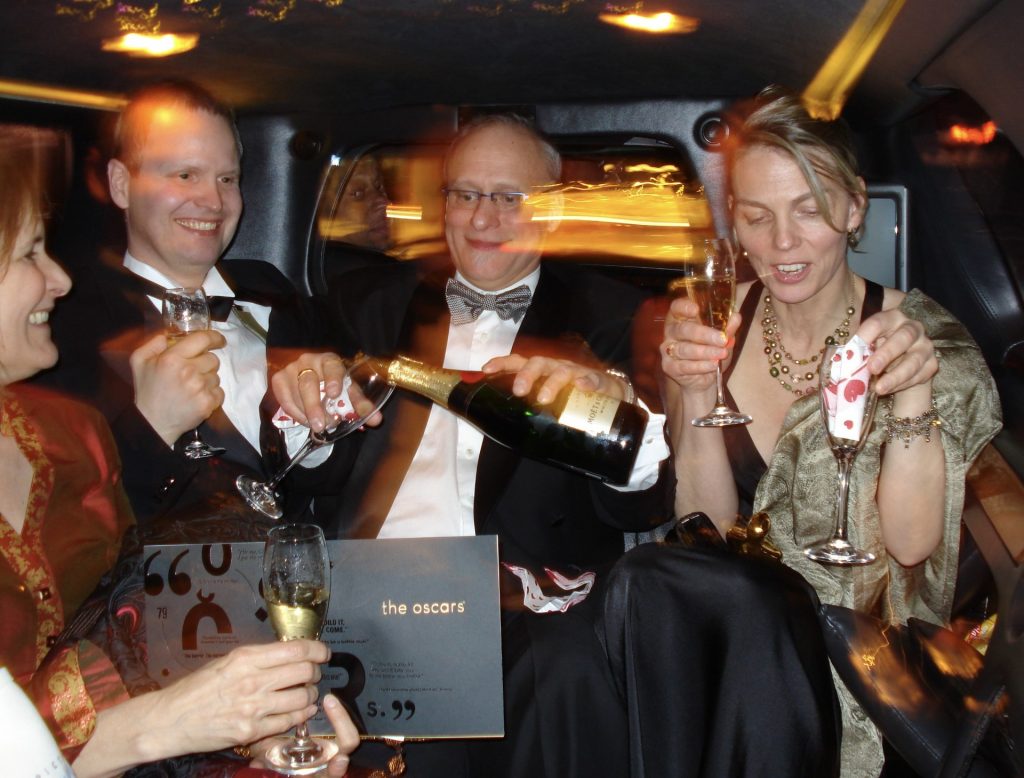
“Marcy Page was our champion from the first day we met—she recognized something in us that we did not yet even recognize in ourselves. She mentored us through every aspect of filmmaking and then every aspect of a film’s success (which at times could be overwhelming). She protected us, picked us up, and never stopped believing in us. She deserves all the awards she’s ever gotten and more.” — Chris Lavis and Maciek Szczerbowski (Madame Tutli-Putli)
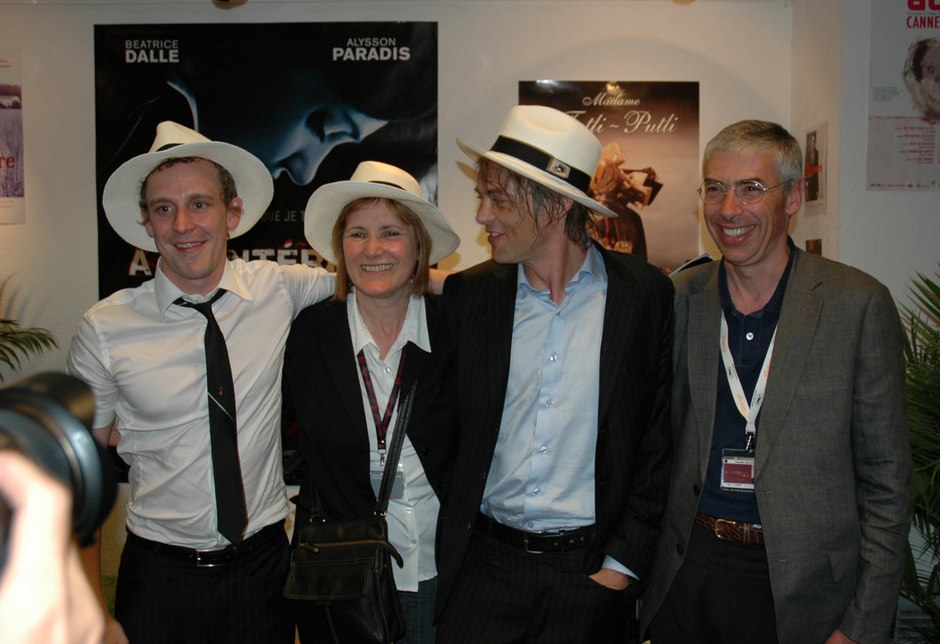
Header image: Patrick Doyon, Marcy Page, Wendy Tilby and Amanda Forbis at the Annie Awards.



